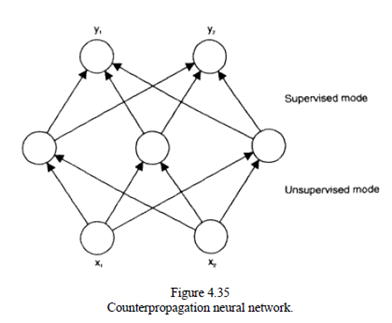SKEDSOFT
Introduction:-Counter propagation network was developed by Hecht-Nielsen in 1987.It is a hybrid between two well-known connectionist models—competitive learning (performed by a first layer of connections) and supervised learning (performed by a following layer of connections).In this respect they are similar to the RBF networks.
The idea behind this architecture is that competitive learning, which is fast, will cluster the input space, assigning one intermediate node to each group. After that, supervised learning is performed, but only on a single layer. The intermediate layer is of the "winner-takes-all” type.
The major advantages of such a network are that
(1) training is much faster than training a three layer MLP with the back propagation algorithm.
(2) the hidden nodes have meanings associated with them.
Applications of such networks have been developed for data compression, pattern classification, and statistical analysis.
